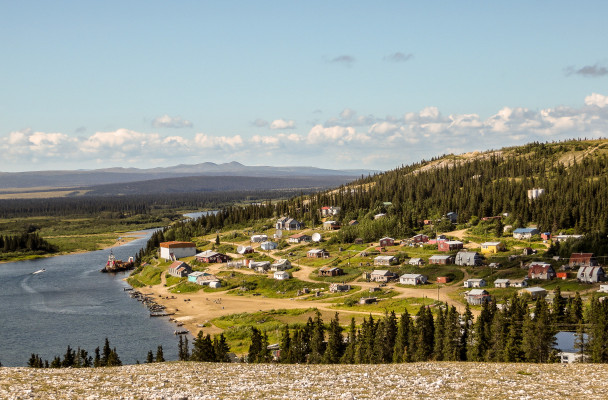The Alaska Department of Environmental Conservation (ADEC) is coordinating the clean-up process of contaminated lands throughout the region and all over the State.

White Mountain’s oil drum storage area is one of nearly 1 thousand sites transferred from federal entities to Alaska Native Corporations under ANCSA. The Bureau of Land Management deems 338 of these sites to be contaminated lands still in need of cleanup, including White Mountain’s oil drum storage area.
Based on a preliminary assessment report done in 1999 by the Ecology and Environment company for the United States Environmental Protection Agency (USEPA), White Mountain’s oil drum site has relatively minor petroleum contamination, up to 540 ppm (parts per million) across a 4-acre site.
As of right now, the contaminated lands have already been designated and surveyed by the Bureau of Land Management, then organized into an online interactive database. Since this database was finished, the BLM’s role in the cleanup process has been very limited.
BLM Project Manager Paul Krabacher says, legally, the BLM can’t do anything, including cleaning up the lands, since the lands have already been conveyed and are no longer managed by the BLM. But, as the clean-up process continues, ADEC focuses on high priority sites, helps negotiate agreements between parties, and examines orphan sites.
John Halverson, the Environmental Program Manager for ADEC’s Contaminated Sites program, defines orphan sites as, “those sites where there’s either known or suspected contamination and there’s not a agency or another party that’s already either working on the site to characterize it and clean it up or planning to do so in the foreseeable future,” explained Halverson.
One example of an orphaned site is White Mountain’s oil drum storage area near the old BIA school. Halverson says the level of contamination and the amount of diesel range organics (DRO) present determines the priority of the site. DROs are a mixture of petroleum hydrocarbons found in diesel fuel.
“We have different clean-up levels based upon the site’s circumstances; even our most conservative clean-up levels are typically based on the contaminants’ potential to migrate to ground water,” stated Halverson. “So, for DRO, our default clean-up level is 250ppm; that’s kind of the starting point, and then people can propose alternative clean-up levels that are higher based on the site’s specific circumstances and information that they collect.”
According to APRN, Daniel Cheyette, Legal Counsel from the Bristol Bay Native Corporation, voiced his concerns about Alaska’s contaminated lands back in August.
“As the landowners, as participants in ANCSA who believed that the land grants were in satisfaction of their land claims, it’s really frustrating that, so many decades later, we still have contaminated sites. And the federal government (is) really moving very slowly in terms of correcting the problems that it created. It’s a step, it’s a start, but it’s taking way too long, and it’s very frustrating for the landowner,” said Cheyette.
According to a DEC report from March 2011 on the White Mountain oil drum storage area, the community’s previous Indian General Assistance Program (IGAP) coordinator indicated that whatever was left of the original 1,000 oil drums would either be transported to Nome’s drum crusher or be reused by the community. Current White Mountain IGAP environmental coordinator Jay Adams says there are still about 60 fifty-five-gallon drums left at the site, less than a mile away from the BIA school building.
Even though the community of White Mountain has removed some of those oil drums on their own, it is not their responsibility to clean up the site. The DEC deemed The Bureau of Indian Affairs as the entity responsible for the cleanup of this site. After repeated attempts to contact the Bureau of Indian Affairs, they could not be reached for comment.
There is no set timeline for the rest of the cleanup at this White Mountain site, or for the other orphaned sites in the region, including the Marshall Fish processing plant and Emmonak’s tank farms.
*Note: more information on the Bureau of Land Management’s report on ANCSA contaminated lands can be found in this article from Alaska Business Monthly.
Davis Hovey is a news reporter at KNOM - Nome.
Hovey was born and raised in Virginia. He spent most of his childhood in Greene County 20 minutes outside of Charlottesville where University of Virginia is located.
Hovis was drawn in by the opportunity to work for a radio station in a remote, unique place like Nome Alaska. Hovis went to Syracuse University, where he graduated with a Bachelor’s of Science in Broadcast Digital Journalism.




